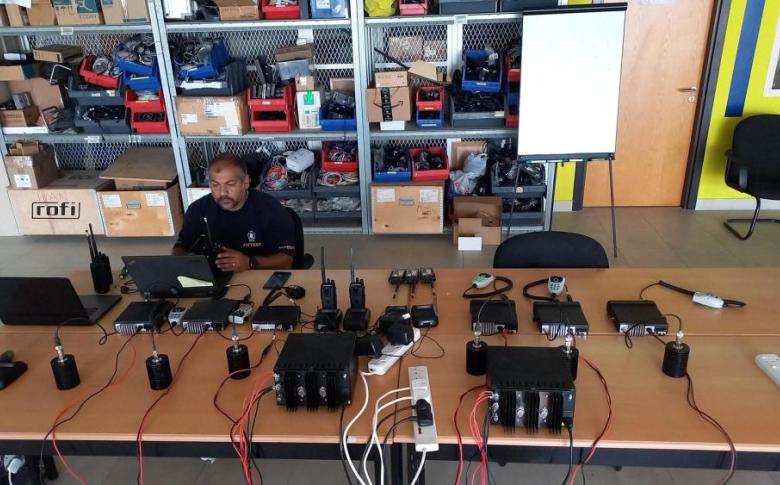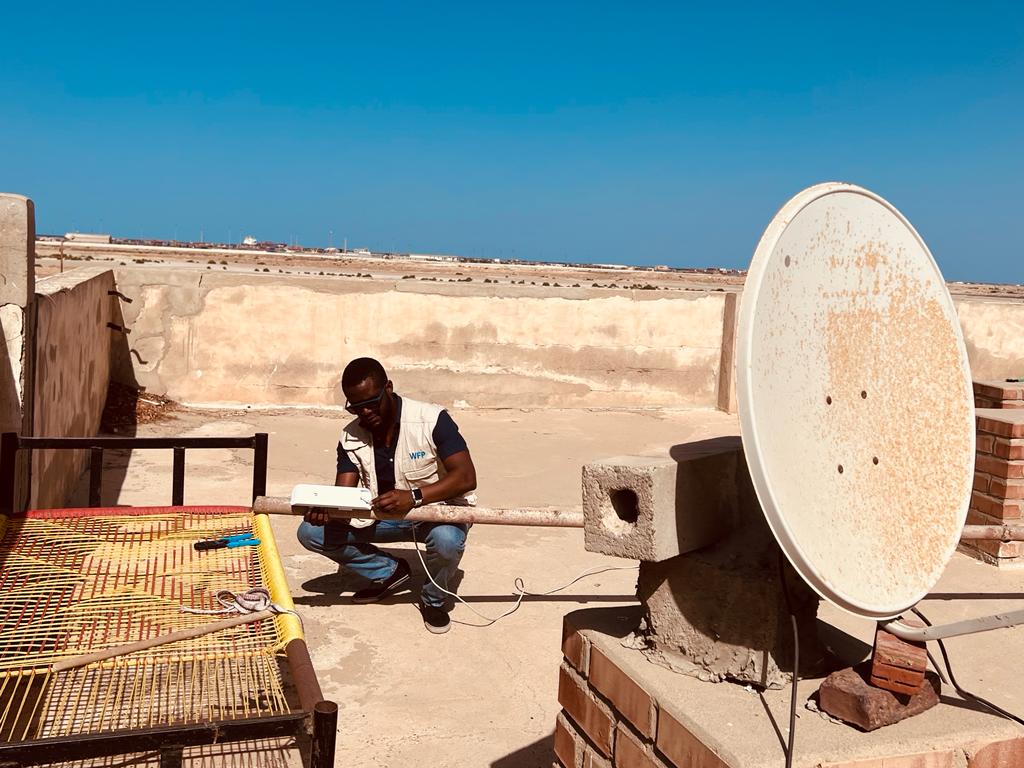Connecting in Crisis: A Remote Solution Safeguards Communication Amid Sudan Conflict

A story about the initiative that made humanitarian responders feel safe when evacuations began in Sudan while most means of communication were down.
When clashes between the Sudanese Armed Forces and Rapid Support Forces forced humanitarian staff to abandon the Security Operations Centre (SOC) in Khartoum earlier this year, vital communications networks were left unmonitored, and the security of humanitarian operations was thrown in jeopardy.
But when communications go down, the United Nations World Food Programme technology teams and their partners activate. Together, they installed a remote security communications solution that provided a lifeline for colleagues caught in the worsening crisis in the country.
As the crisis escalated, telecommunications networks began to fail, and mobile networks became unreliable. Using very high frequency (VHF) radio as the primary communication method, WFP staff managed to extract colleagues from dangerous areas.
"At the beginning, mobile networks were still working. But as the days went by and fuel shortages and damage to infrastructure began to take its toll, it got harder and harder to place a call," says Yousif Mirza, an IT Operations Officer with the Sudan country office. "Before long, we were using VHF radio as a primary means of communication as we tried to extract colleagues from the hot zone."

As preparations for evacuations were being made in Khartoum, Yousif could stay in contact with an injured colleague trapped in his apartment using the humanitarian radio network. Still, without an active SOC operated by dedicated staff, Yousif found himself performing the role of radio room operator, managing humanitarian communications himself over the VHF network. "Thanks to the VHF system and the efforts of the security team, we were able to extract our colleague to safety successfully," he reflects.
The Telecommunications Security Standards {TESS+} service and WFP's Fast IT Telecommunications Emergency and Support Team (FITTEST) teams collaborated to address the increasingly unreliable humanitarian communications network quickly. They mobilized personnel, designed a remote system, assembled it in Dubai, and tested it.
The goal was to provide the UN Department of Safety and Security (UNDSS) in Nairobi with a plug-and-play system to communicate with and support users in Sudan. The remote solution proved successful, ensuring continuous monitoring and communication support. Even after the main evacuations, the VHF radio network remained essential for the safety of WFP staff working in volatile areas. The collaboration between {TESS+}, FITTEST and UNDSS was instrumental in the crisis response.

The groundwork laid by {TESS+} made the response in Sudan possible. The service developed the standards required to implement a remote service while assessing current security communications systems and providing training and support. Implementing a remote SOC modality also brought cost efficiency, saving the UN Security Management System USD 1 million annually in Sudan alone.
It also exemplifies the dedication and quick thinking of WFP's technology, regional and country office teams, who worked together to find innovative solutions and protect humanitarian workers on the ground, highlighting the importance of preparedness and close coordination to enable effective emergency response.
----
This story was originally published on ReliefWeb